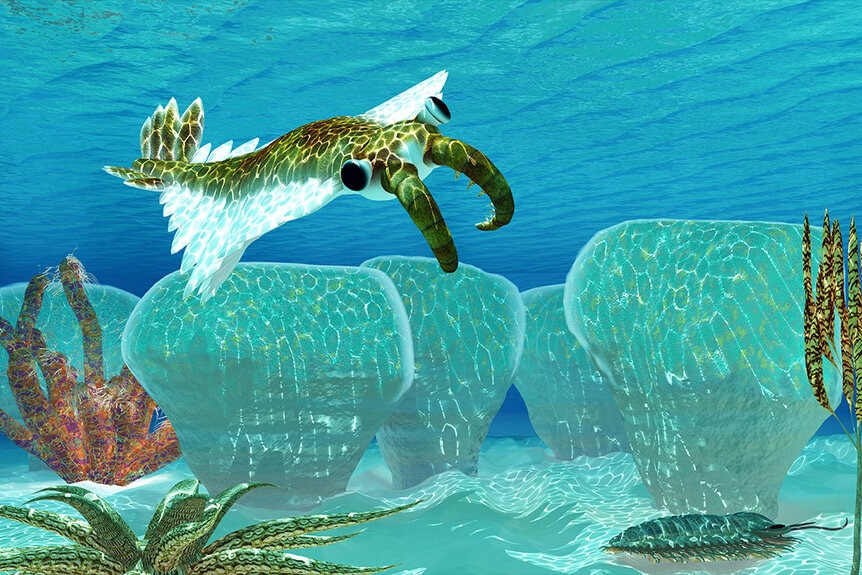Create a free profile to get unlimited access to exclusive videos, sweepstakes, and more!
The World’s First Apex Predator Probably Gummed Squishy Foods
What a softy.
We have to give props to the folks at Jurassic World (streaming now on Peacock) for seeing what happened at Isla Sorna and having the stones to do the whole thing again. It wasn’t smart, but it was gutsy. If we take the historical theme park to its logical endpoint, we should end up with Carboniferous State Parks and Cambrian Aquariums.
There, you could walk through the various oceanic ecosystems which spawned the earliest complex life on our planet. In such an aquarium, the crown exhibit would undoubtedly be Anomalocaris, a genus of early arthropod called radiodonts, which launched to success during the Cambrian explosion. It is also, perhaps, the world’s first apex predator. Although, according to recent research published in the Proceedings of the Royal Society B, they may have been less deadly than we once imagined.
Anomalocaris: An Alien Predator from the Early Earth
Anomalocaris looked unlike anything alive on Earth today, but it can’t really be blamed. Complex life was brand new and there weren’t any blueprints to work with. Fully grown, they stretched up to 60 centimeters (about two feet) in length, which is rather small by today’s standards, but enormous by Cambrian.
RELATED: What Even Is That Thing? The Weirdest Arthropod Evolution Could Think Of Just Got Weirder
Its body was lined by a row of flexible appendages running along each side. Anomalocaris used them to move through the water like bizarrely designed proto-fins. Two larger appendages sprouted from its face, like it was duel-wielding elephant trunks. In fact, Anomalocaris used them similarly to elephant trunks, to grab onto prey and pull it into its disk-shaped mouth.
Give its comparatively large size and ability to move swiftly through the water, scientists have long imagined Anomalocaris patrolling the Cambrian seas and chowing down on everything in its path, most especially trilobites. It turns out, however, that Anomalocaris may have been a little more particular about what it ate, because it had to be.
Researchers built a 3D model of Anomalocaris based on fossil specimens and living relatives, then they ran it through the motions of being a Cambrian apex predator. Their experiments confirmed that Anomalocaris was likely a fast swimmer capable of chasing down prey animals and latching onto them with its weird facial appendages. But even if they caught a trilobite they probably couldn’t have eaten it.
RELATED: Bizarre trilobite eyes are nightmare fuel emerging after almost 400 million years
That’s because trilobites had incredibly hard exoskeletons, which Anomalocaris probably couldn’t have bitten through. While its oral cone was lined with tooth-like projections, researchers suggest they would have been damaged trying to bite through trilobite shells. Instead, Anomalocaris probably preferred soft and squishy foods it could slurp up without chewing.
Trilobites were probably only at risk of Anomalocaris after a fresh molt, when their new armor hadn’t yet hardened. Come to think of it, the existence of a predator like Anomalocaris might be an awfully good reason to develop a toughened exoskeleton in the first place. Of course, we could find out for sure if some billionaire would step up and fund Cambrian Aquarium.
In the meantime, catch up on the Jurassic franchise, streaming now on Peacock!































